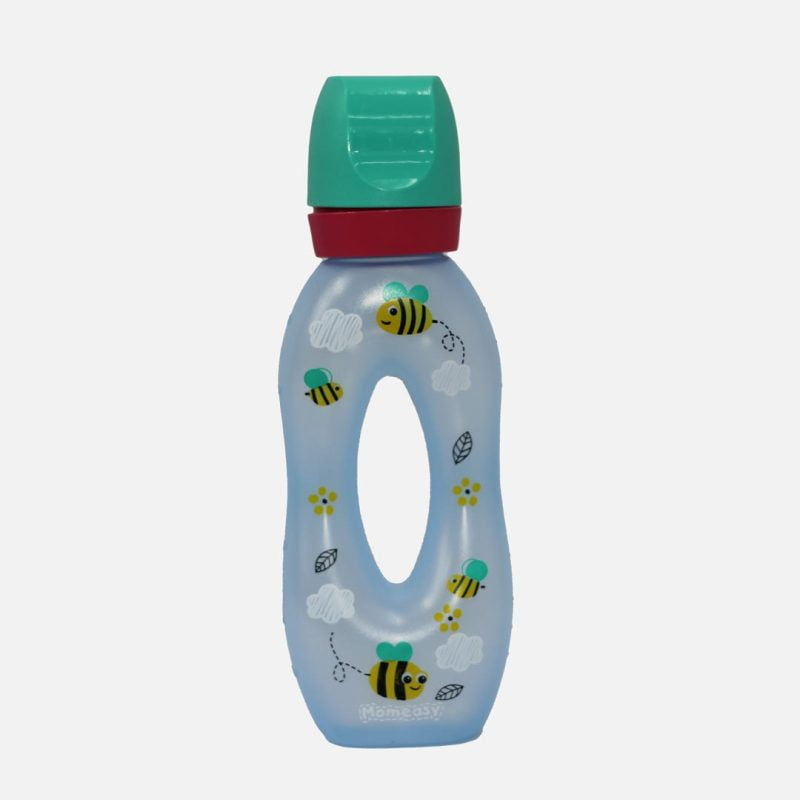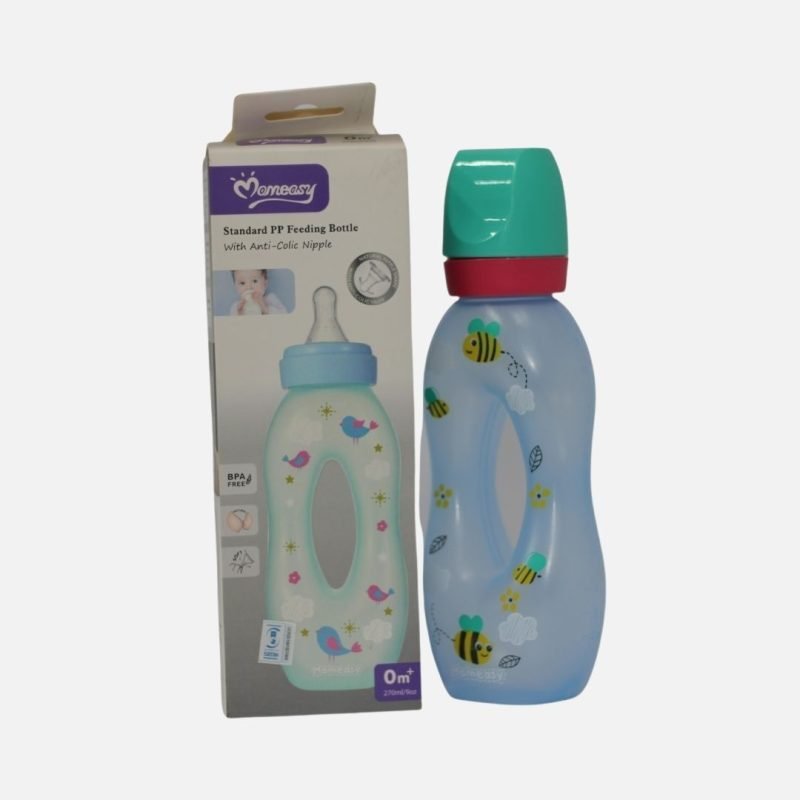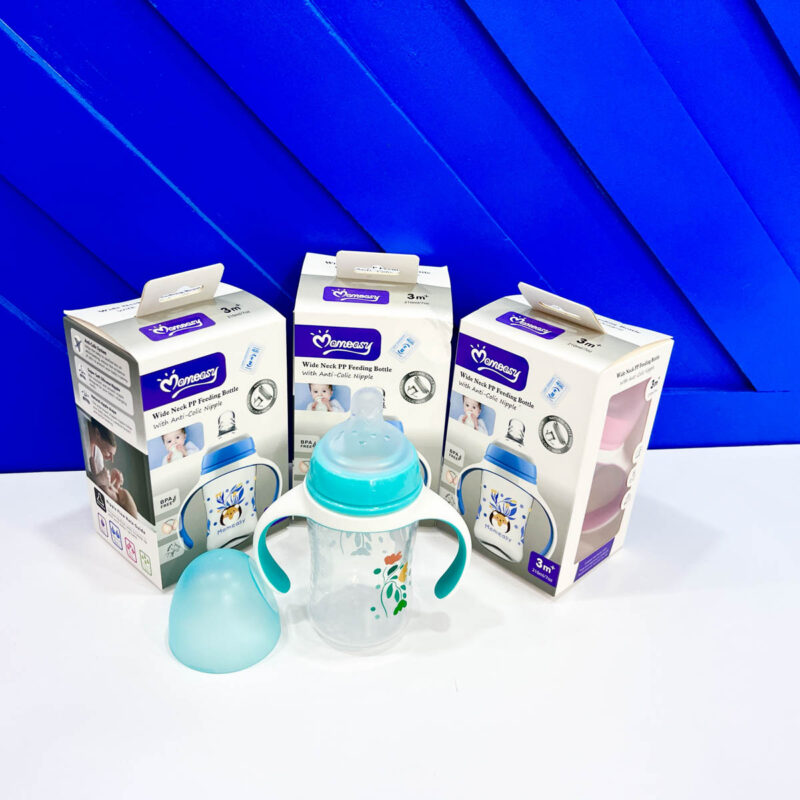Newborn babies are fragile, and you need to take care of them in every way possible. Even their feeding habits need that extra bit of attention. Starting from their immune system to keeping them hydrated – you have to be careful about everything when it comes to your bundle of joy. With different feeding bottles on the market, choosing one for your newborn can be daunting.
How do you know which one is best? There is so much variety that it feels overwhelming. This article will give you an insight into the various types of feeding bottles available today, as well as their pros and cons so that you can make an informed choice when buying one for your precious little one.
Types of Feeding Bottles for Newborns
There are numerous types of bottles available on the market today, and the diversity can be quite perplexing. To make an educated choice about which bottle is best for your child, you must grasp the differences between them and their advantages and drawbacks. The following are 9 different types of feeding bottles;
1. Standard feeding Bottles
Standard feeding bottles come with basic features. These are what you are most likely to see in stores, available under various brand names.
Pros
They are mostly inexpensive.
They are easily available, even at your local chemist’s.
You can get them in any color or design of your choice.
They fit most standard teats, and cleaning accessories are easily available.
Cons
The narrow necks make them a little difficult to clean.
Extra care is required to fill the bottle through the narrow neck.
Babies might swallow excess air while sucking.
2. Anti-colic Feeding Bottles
Anti-colic bottles help reduce the incidence of colic, a painful condition in the abdomen, resulting from indigestion or gas. Anti-colic bottles and teats are specially designed to prevent the intake of air while sucking, and usually feature air vents, tubes or bags.
Pros
They reduce the chances of the baby swallowing air.
They can reduce colic caused by gas.
Cons
They are not guaranteed to prevent colic.
Their different design makes them difficult to clean.
They are more expensive than regular bottles.
They are not as easily available as regular bottles.
3. Self-sterilizing feeding bottles
Sterilizer bottles can sterilize themselves. Water is poured into the lower portion of the bottle, and the remaining parts are placed on top. It is then heated in the microwave for a prescribed number of minutes.
Pros
They don’t need extra equipment for sterilization.
They are convenient and time-saving.
They are travel-friendly.
Cons
They are more expensive than regular bottles.
Every microwave is different, so extra care needs to be taken to prevent over-heating of the bottle.
They won’t work if the power goes off.
4. Disposable Bottles
Disposable bottles come ready to use. The bottles and their parts are already sterilized. They can be thrown away after the baby is fed, with no mess to clean up.
Pros
They are convenient and time-saving.
They are perfect for travelling or any situation with a time crunch.
They can be used by someone not familiar with handling baby’s bottles and things.
Cons
They aren’t environment-friendly.
Their disposal can create problems
Their consistent usage can prove to be expensive
5. Wide-neck feeding bottles
These bottles have a stouter appearance compared to regular bottles, and are ideal for babies who drink from the breast as well as the bottle.
Pros
They offer less difficulty for breast-fed babies to transition to and from the bottle.
They are easy to clean and sterilize.
They are fairly inexpensive.
Some of them come with anti-colic properties.
Cons
They are not as easily available as regular bottles.
Matching nipples for them are not easily available
6. Angle Neck feeding Bottles
Angle neck bottles are straight bottles which bend at an angle near the neck. They are designed so, to keep the teat full of milk at all times.
Pros
They reduce the chances of the baby swallowing air.
They require the baby to be held upright, thereby reducing the chances of ear infections.
They can reduce colic caused by gas.
Cons
They can be expensive.
They are not as easily available as regular bottles.
They can be difficult to clean.
They are not guaranteed to prevent colic.
7. Breast mimicking feeding bottles
Most bottles that mimic breasts have specially designed nipples. These bottles are usually wide-necked and may have a curvier body. The nipples are anatomically designed to resemble the shape and softness of a human breast.
Pros
The teat adapts to the roof of the baby’s mouth, creating a natural feel.
There are fewer chances of nipple confusion for babies who feed from both breast and bottle.
Babies feed more readily, even if the mother is not around.
They are easy to clean and sterilize since the number of parts is minimal.
Cons
These bottles are relatively more expensive than the standard ones, owing to their special design.
Finding replacement nipples can be difficult.
8. Vented feeding bottles
Vented bottles contain vents that keep the air at the back of the bottle while preventing the liquid from seeping out. An anti-vacuum chamber is created at the base of the nipple, which allows a one-way flow of air, thereby preventing the outflow of liquid.
Pros
They prevent liquid from leaking out and choking the baby.
They create less mess.
They can reduce colic in babies.
Cons
They are more expensive than regular bottles.
They aren’t easily available at all stores.
They are not guaranteed to prevent colic.
9. Bottles with Disposable Liners
These are small bags placed inside regular bottles and filled with milk, which are then thrown away after use.
Pros
They are convenient and time-saving.
They are perfect for travelling.
They don’t occupy much space while packing.
Cons
They aren’t environment-friendly.
Their disposal can create problems.
Their consistent usage can prove to be expensive.
If used incorrectly, the bottle might still end up having to be cleaned.
How to choose a Newborn Feeding Bottle?
Regardless of what bottles you’re thinking of purchasing, you want to make sure they meet a few basic requirements first. If the one you’re looking at meets some or all of these five criteria, you can be pretty confident it’s a quality pick.
1. BPA Free
BPA, otherwise known as bisphenol A, is an industrial chemical used to make plastic. BPA-containing plastic containers may leach chemicals into your food or drinks. If you prefer to purchase plastic baby bottles, make sure they are BPA-free to prevent any chemicals from getting into your baby’s milk. All BPA-free bottles should bear a label saying they are BPA-free.
2. Easy To Wash
Newborns require a lot of nourishment to support their growing bodies. Babies require between eight and twelve feedings per day, on average. This can result in a lot of dirty bottles! Be sure to search for bottles that are simple to connect and clean. A dishwasher-safe bottle is also a great option. We also like bottles with a straightforward design that doesn’t have too many nooks and crannies where milk may dry and mold.
3. Venting System
It’s tough to be a fussy newborn or to suffer from colic or flatulence. Because the air they swallow is trapped in their digestive tracts, these infants are extremely uncomfortable. If a baby is uncomfortable, his mother will be too. That’s why you want a baby bottle that vents air to prevent trapped air from ruining your baby’s belly and producing painful gas and colic.
4. Measurement Marks
Keeping track of how much milk you produce and how much milk your baby consumes may seem like a science at times, especially if your baby has any health problems. With measurement marks on a bottle, you can accurately track how much milk you produce and how much your baby drinks.
However, be cautious! A recent study suggests that a significant number of baby bottles with measurement marks are inaccurate. It is crucial to investigate the reviews on a product before purchasing to investigate whether other mothers agree with the accuracy of the measurement marks.
5. Pumping Compatible
More than 80 percent of moms begin by breastfeeding. However, it can be emotionally and physically demanding, and at some point, you may want a break. It’s convenient to pump directly into a bottle and go out for the evening or even just do errands solo (it can feel like a mini-vacation!) Whether this means the bottle can attach directly to the pump or is simply designed to make storing breast milk easier, it’s helpful to make sure the bottle is pumping compatible.
At Zawadi Baby Shop, we offer a wide range of products to help you feed your baby. We stock a range of certified organic and non-organic baby bottles, as well as teats and accessories. You can hop online through our website or you can physically visit us here at Nairobi CBD – Dynamic Mall, 2nd-floor shop ML105. Opp. Chicken Inn Ambassador, Tom Mboya Street.



